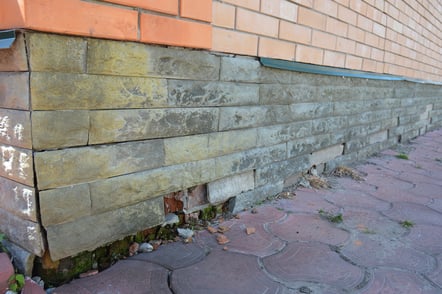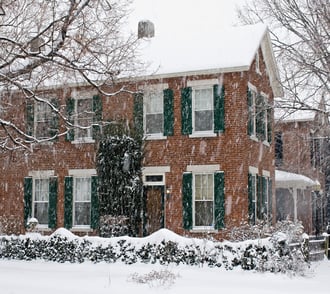One of the most damaging things we see that allows water to invade homes begins before the cold winter months start. Some simple maintenance can prevent this serious problem from developing. Specifically, cleaning out rain gutters to prevent blockages.
Washington DC winters are typically cold and wet, and this can mean trouble for your home. Water is an insidious invader that will seep in through the smallest opening and do considerable damage, often before a leak is discovered.
How Do Clogged Rain Gutters Cause Problems?
If you live in an area with tree-lined streets or have many trees on your property, you know just how quickly fall rain and wind can bring a beautiful variety of colors streaming down into your yard. But nature’s color palette also causes you some extra fall chores – dealing with all the leaves. While DC homeowners may rake leaves to the curb for pickup, they must also pay attention to other places that gather leaves.
Your rain gutters perform a valuable service that protects your home from moisture intrusion. They carry rainfall from your roof and channel it away from your home’s foundation to prevent water damage. However, when leaves, the miscellaneous tennis ball, and other seasonal debris clog these rain gutters, water builds up and stands, weighing down gutters and causing them to break or fail.
Another serious problem is the formation of ice dams on clogged gutters. The standing water in a clogged drain will freeze as winter temperatures drop. As water and snow accumulate on the roof above the gutter and freeze, it piles up on the existing ice, causing an ice dam. Those beautiful icicles hanging from the edges of your roof are nothing to smile about – they denote a serious problem.
Water backs up behind this dam and takes the path of least resistance – underneath roofing material and into your home. This water will cause peeling wall paint, sagging ceilings, water stains, warped floors, sodden overhead insulation, and dangerous mold. It can also get behind the outer brick façade and cause damage to your brick and mortar structure.
Prevent Ice Dams and Winter Water Intrusion
To prevent this catastrophe, be sure to thoroughly clean out all gutters and downspouts after the last of the fall, leaves have dropped. If your location sees an excessive amount of leaves, you may need to perform this chore more than once to prevent buildup and clogs. You should also take this opportunity to inspect your guttering and perform any repairs on broken, leaking, or sagging gutters and downspouts.
Another recommendation is to inspect the attic or overhead crawlspace in your home for sufficient insulation and proper ventilation. When your home keeps a steady temperature just below the roof, this allows the roof to shed water naturally during winter. Poor ventilation and uneven heating in the attic warm the higher portion of the roof but leave lower portions cold. Air enters at the eaves as heat inside the attic rises. These cold eaves cause the water to freeze at the roof’s edge, contributing to ice dam formation.
If you notice moisture in your attic or crawlspace, you may need to investigate further to prevent more severe water intrusion. If your outside brick façade has cracks or bulges, Renaissance Development can perform an evaluation and provide an estimate for repairs. We excel at brick tuckpointing and repairing masonry damaged by water intrusion.
Contact us today for all your historic tuckpointing, exterior masonry, and urban garden needs.
Dec 17, 2020 12:32:00 PM


